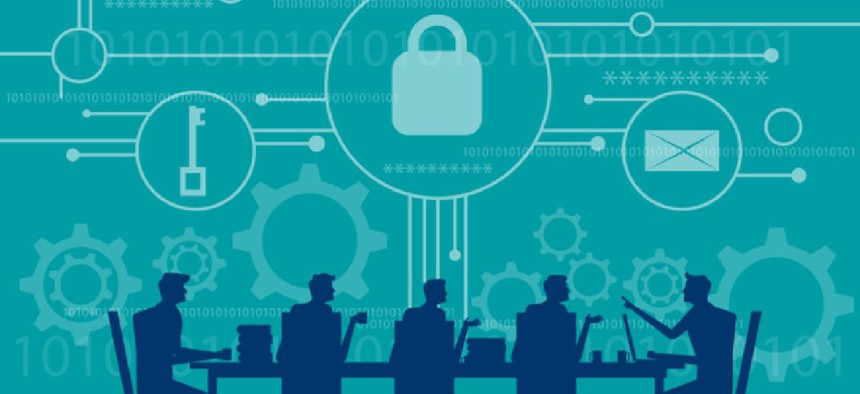How the pandemic taught agencies to accept and adapt

A group of IT leaders got together to discuss how agencies responded to the changes forced by the pandemic, what challenges they faced and how they broke through old barriers to deliver better citizens services.
The pandemic put unprecedented demands on government agencies that had to quickly retool citizen-facing operations to address a new suite of digital services and scale up back-office processes to support a remote and hybrid workforce.
Participants
Keith Alderson
Deputy Assistant Commissioner, Debt Management Services, Bureau of Fiscal Service, Department of the Treasury
Richard Burnham
Acting Director DCSD-DMS, Bureau of Fiscal Services, Department of the Treasury
Sheila Rose Campbell
Special Advisor for Digital Services, Office of Policy, Planning and Resources, Department of State
Judith Conklin
Deputy CIO, Library of Congress
Evan Davis
Senior Vice President, Federal Civilian Agencies, MAXIMUS
Nora Dempsey
Senior Advisor for Innovation, Department of State
Sanjay Gupta
CTO, Small Business Administration
Larry Reagan
Vice President, Finance, MAXIMUS
Harrison Smith
Chief Procurement Officer, Internal Revenue Service
Note: FCW Editor-in-Chief Troy K. Schneider led the roundtable discussion. The May 26 gathering was underwritten by MAXIMUS, but both the substance of the discussion and the recap on these pages are strictly editorial products. Neither the sponsors nor any of the roundtable participants had input beyond their May 26 comments.
In May, a group of IT leaders got together to discuss how agencies responded to the changes, what challenges they faced and how they broke through old barriers to deliver better citizens services.
The discussion was on the record but not for individual attribution (see sidebar for full list of participants), and the quotes have been edited for length and clarity. Here's what the group had to say.
Internal customers first
For most agencies, citizen service volume surged at the same time senior officials were scrambling to move their teams to telework. Roundtable participants noted that this was often more difficult than adjusting the citizen experience -- yet absolutely essential to allowing the workforce to focus on end customers.
Several officials said it took months just to provision employees with laptops and other essential remote-work equipment. "The supply chain hit us," one noted.
At other agencies, the challenge was inconsistency. "A lot of our IT is fairly decentralized," another official said. "Where I sit, we had a culture where people come on board and you give them a laptop, but that is not necessarily the case in other parts of the department. And so we just found that there were really big disparities and that complicated the response."
Creating a constructive remote work culture took longer still. "I think we really need to think about this hybrid work environment where we have this distributed workforce, people in multiple time zones," one official said. "Ultimately, if they feel comfortable with the technology, they'll deliver better services. They'll think more innovatively about how to apply the technology solutions to better serve the customers. I'll plus one to all the things about citizen metrics and all of that, but I think our focus is going to be, how do we help the workforce really adapt in this future workspace?"
The pandemic also forced agencies to shift their expectations for everything from signature requirements -- what, exactly, qualifies as a valid electronic signature? -- to managers' acceptance of telework.
"Even 10 years ago, I remember the conversation around, 'Hey, if you can't give me a work plan for the day, you need to come in and come to work,'" one executive said. "And my joke at the time was, 'Yes, because if you don't have any work to do, you darn well better not do work in the office.'"
"I think what's really pushed us unexpectedly is just this mindset of, 'We can do all this stuff online,'" another participant observed. "I know that seems so basic, but even rethinking our physical footprint, like these processes that we used to say you can only do them in person. Well, actually we figured out a way to do it online. Maybe we've had to re-look at our risk posture in doing that, but it forced us to actually do that. I think just that realization that we really need to deliver these services online to citizens is huge."
Another official suggested that "the breakdown of some societal norms and the status quo due to COVID has also broken down a lot of those barriers. We're loosening security restrictions. We're loosening workplace restrictions. We're loosening the norms around how we communicate with each other. So I'm optimistic that there's an opportunity here for people trying to do what you're doing to use that breakdown to open up some communications around how to link those things together."
A longer version of this article was first posted to FCW, a sibling site to GCN.





